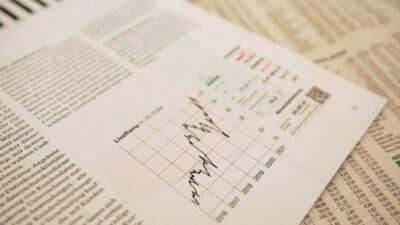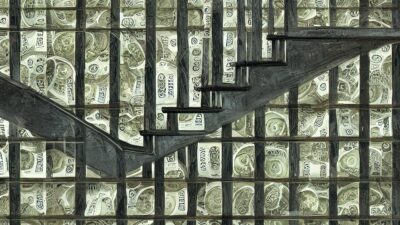Chris Leeson and Massimo Garbuio

Board games at Disney, the fight of the figureheads
It’s a tough time to be a board member.
Chair extraordinaire Catherine Livingstone is calling for shortened terms for directors, Woodside Energy is under attack from superfunds demanding board representation while the current Walt Disney board is engaged in a very public and expensive battle with activist investors.
The fight for control of Disney is the most acrimonious in the company’s 100-year history.
On one side ‘trust us, we’ve got this’ sit the incumbents – on the other, the ‘visionary activists‘. There is plenty of ill will and bad press to share.
Disney shareholders are right to feel frustrated and conflicted. Years of languishing returns and failed succession planning have erupted into a distracting and public battle.
With the vote fast approaching on April 3, shareholders and Disney fans across the globe are being bombarded with strong critiques on the lack of merit in the CVs of most applicants.
Disney’s board room feud is a self-inflicted wound
We research the relationship between good governance and financial performance. Our focus is on unpacking what modern board composition actually is, rather than traditional measures of board composition and diversity.
We have established a sliding scale that measures boards’ skills in relation to their ability to guide the business’s strategy forward. On one end of the scale, we have traditional boards that are typified by a rearward bias and dated skill sets. On the other end of the spectrum are progressive and diverse boards with modern skills like technology, transformation, and consumer understanding.
This is not Disney’s board. Disney’s board features progressive figureheads that appear to be there for the prestige rather than the responsibility of guiding a firm for shareholders, employees, and customers.
CEO Bob Iger has been lauded as ‘Mr Hollywood’, a serial deal maker and visionary. But it’s clear the current board is not fit for purpose. Now is the opportunity to shake out those directors cruising along on prestige, and vote in relevant expertise for the modern Mickey Mouse juggernaut.
Disney ($205b) is a vastly more complex beast than the much larger Microsoft ($3T) or even its rival, Netflix ($265b). It’s a global empire that spans cruises, theme parks, real estate, film production, radio, consumer products, and digital platforms.
With such complexity, and the rapidly changing nature of technology, markets and consumers, the board desperately needs the right skills for appropriate oversight and strategic direction.
The Mouse House current board is a star-studded line up that would dazzle most shareholders. Its chair is Mark G. Parker, who is also the Executive Chairman of Nike – another global behemoth demanding significant time and attention. This is a criticism not an endorsement.
The supporting cast features CEOs of General Motors, Oracle, WE Family Offices and Lululemon, along with the Executive Chairman of Morgan Stanley. Meaning half of the board occupy roles outside of Disney that place significant demands on an individual’s time and resources, limiting their ability to assess and guide Disney.
What value does the CEO of a car company or an athleisure brand create for an entertainment conglomerate?
The remaining six members may have suitable time and resources, but even then, some are serial directors lacking the skills to add value and insight for a complex company like Disney.
The beating heart of Disney is the intellectual property it produces, but it only has three members with relevant experience – one of which is Iger. And for a company with a succession planning problem, the board has only five members with experience, all of which have proven inept during the (former CEO) Chapek saga. Throw in the fact that these directors are on auditing and compensation committees, and it’s evident they’re limited in driving meaningful, disciplined conversations on strategy.
Just on half the board have experience in either strategic transformation or technology, and given the challenges facing the business, it’s truly surprising that there’s no committee to transformation and change. Rather than focusing on forward looking decisions and strategic oversight, this board is meeting on inherently backward-looking committees like audit, nominations, and compensation.
In fairness, Disney has started to turn it around: dividends are being restored, significant cost reductions delivered, ESPN Bet has launched, new joint ventures announced, an investment into Epic Games, and a new deal for Disney+ distribution. It’s all action at Disney now that the activists have arrived.
That doesn’t mean the activists should get a spot on the board. It’s hard to predict what a seat or two at the table will do to Iger’s motivation for change. Shareholder pressure is working – having activists at the table may take the pressure too far.
Disney is a remarkable firm which is part due to its long-term perspective. Greater shareholder presence on the board could threaten with creeping short-termism. What Disney needs now, is a rejuvenation of the board. It needs industry specific skills, it needs technology and transformation skills, and it needs individuals with the time and bandwidth to dedicate themselves to a complex company in desperate need of a successful succession plan.
This is not just a Disney story
In Australia Woodside is emeshed in a boardroom challenge. The activist characters are the superannuation funds (Australian Super, HESTA, and Market Forces) wielding $3.7t powered by 11% of Australian wages. They represent shareholders with strong ‘outsider’ views who want to bring those opinions to count towards the company’s strategic direction.
Former Australian Prime Minister Paul Keating recently told the Australian Financial Review that super funds would increasingly seek to nominate directors to boards in order to exert more influence. But pressure should not mean position.
Shareholders should be able to exert pressure on boards but it doesn’t mean they have a right be on the board.
A successful board requires depth and experience in the company’s key business areas, or in the areas that are critical for its future. In the context of Woodside, it appears that the best experience to drive climate impact reduction would be someone with deep knowledge of operations and technology that can guide more efficient operations. Afterall, it will be efficiency, the production of the same or more with less, that will drive climate results, not the pursuit of arbitrary targets that distract the business and the board. It’s about being progressive with relevance and depth, not labels and buzzwords.
Image: Adrián Valverde
Chris is a media and entertainment strategist with research and lecturing experience at the University of Sydney Business School. Chris' work is across strategy, M&As and equity investing with experience in Australian and global firms.
Dr Massimo Garbuio is an Associate Professor in Entrepreneurship at the University of Sydney. He's passionate about helping students and business leaders become master strategists.
Share
We believe in open and honest access to knowledge. We use a Creative Commons Attribution NoDerivatives licence for our articles and podcasts, so you can republish them for free, online or in print.







